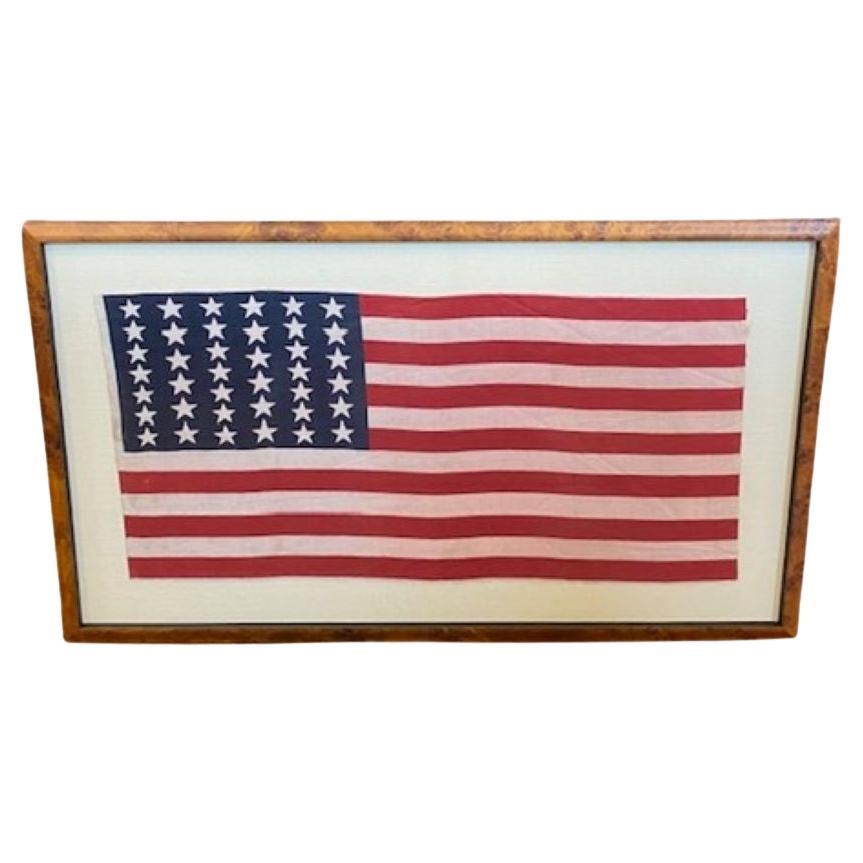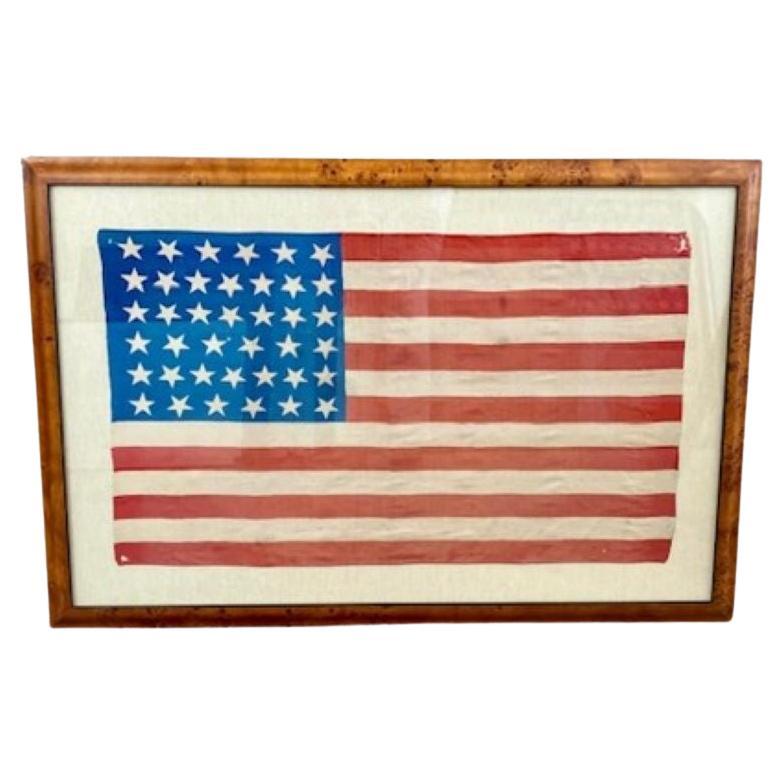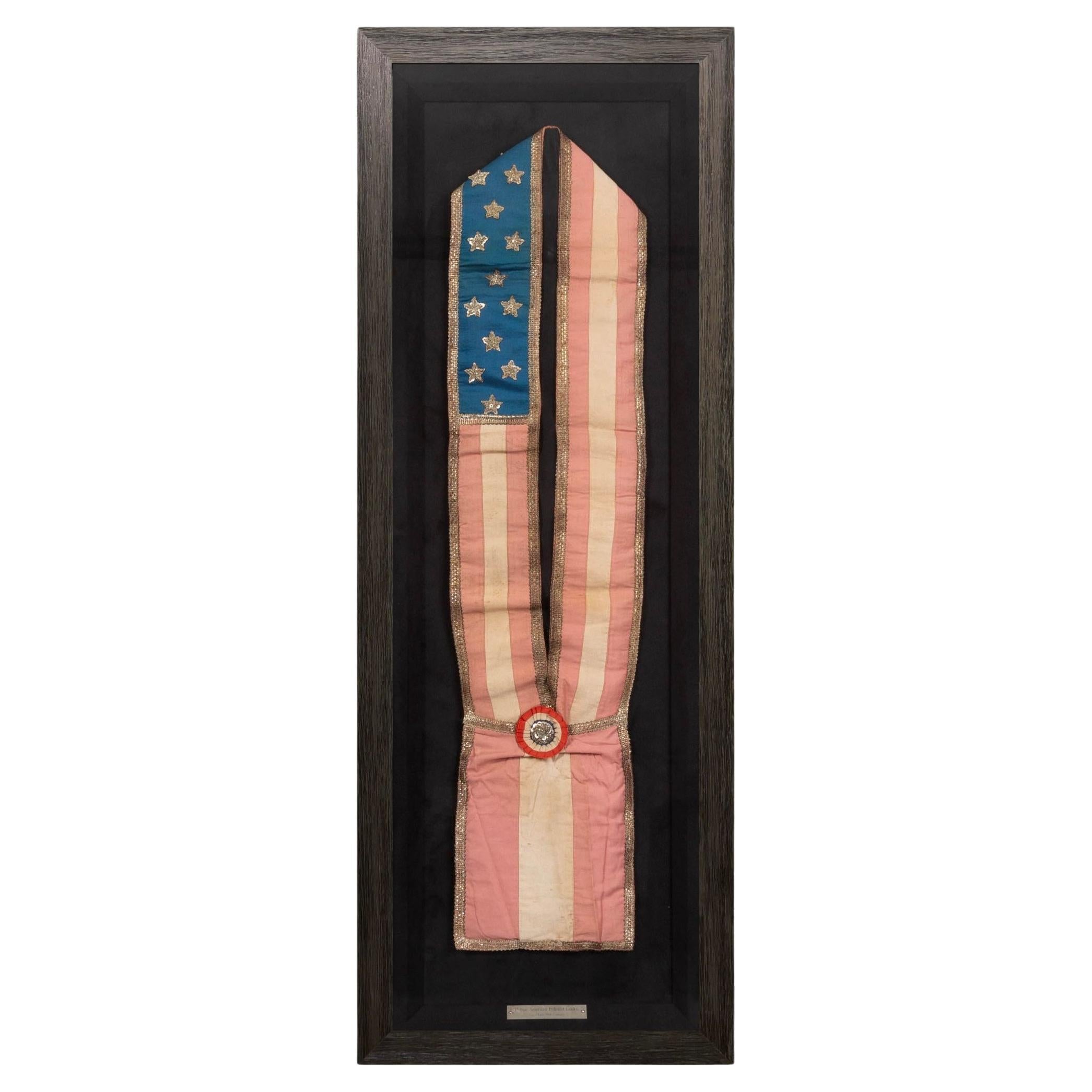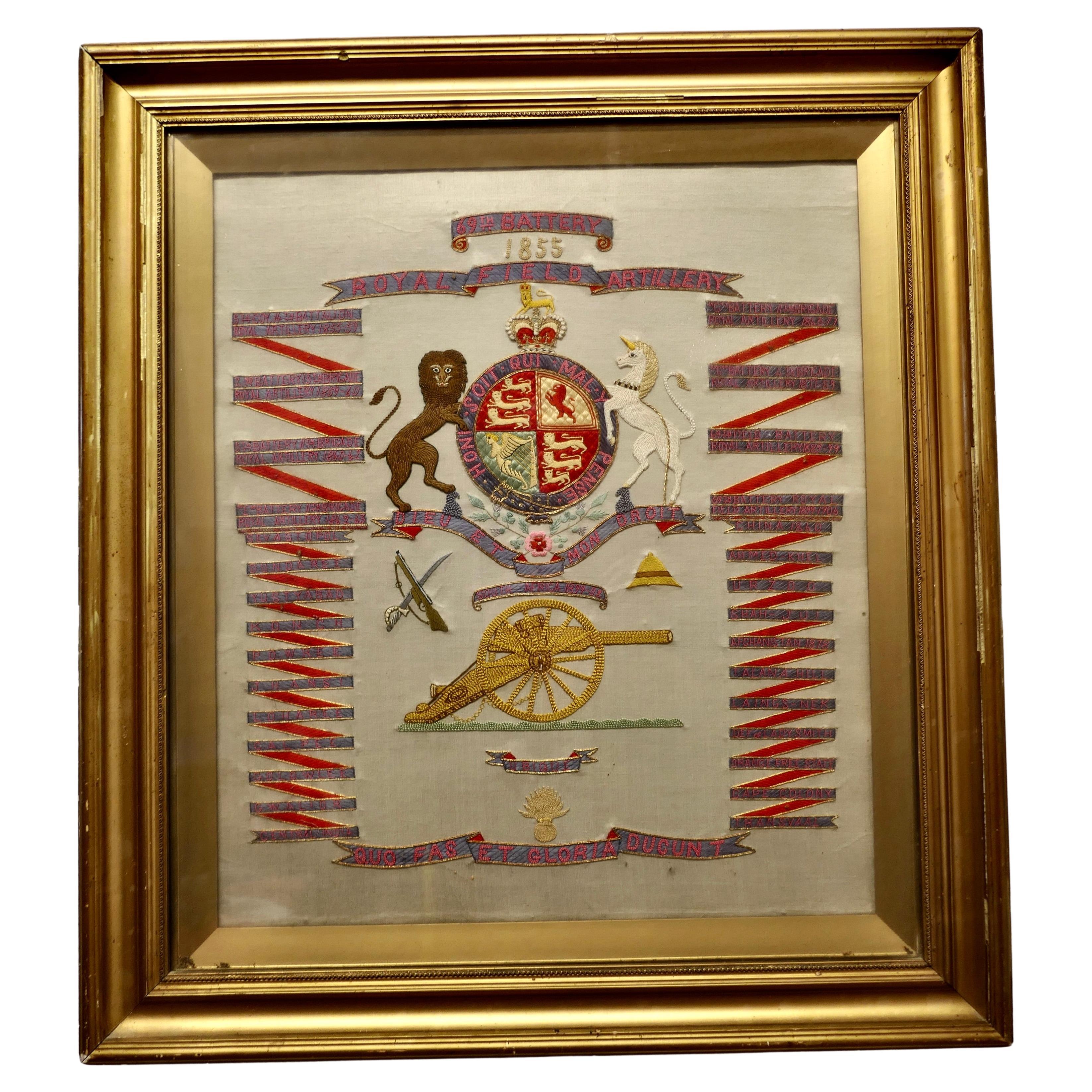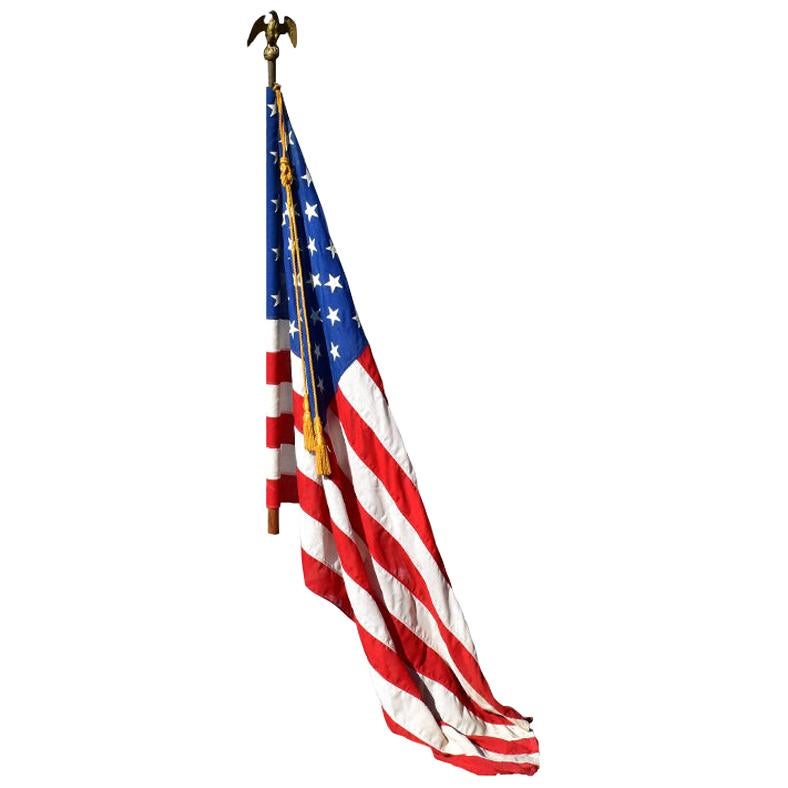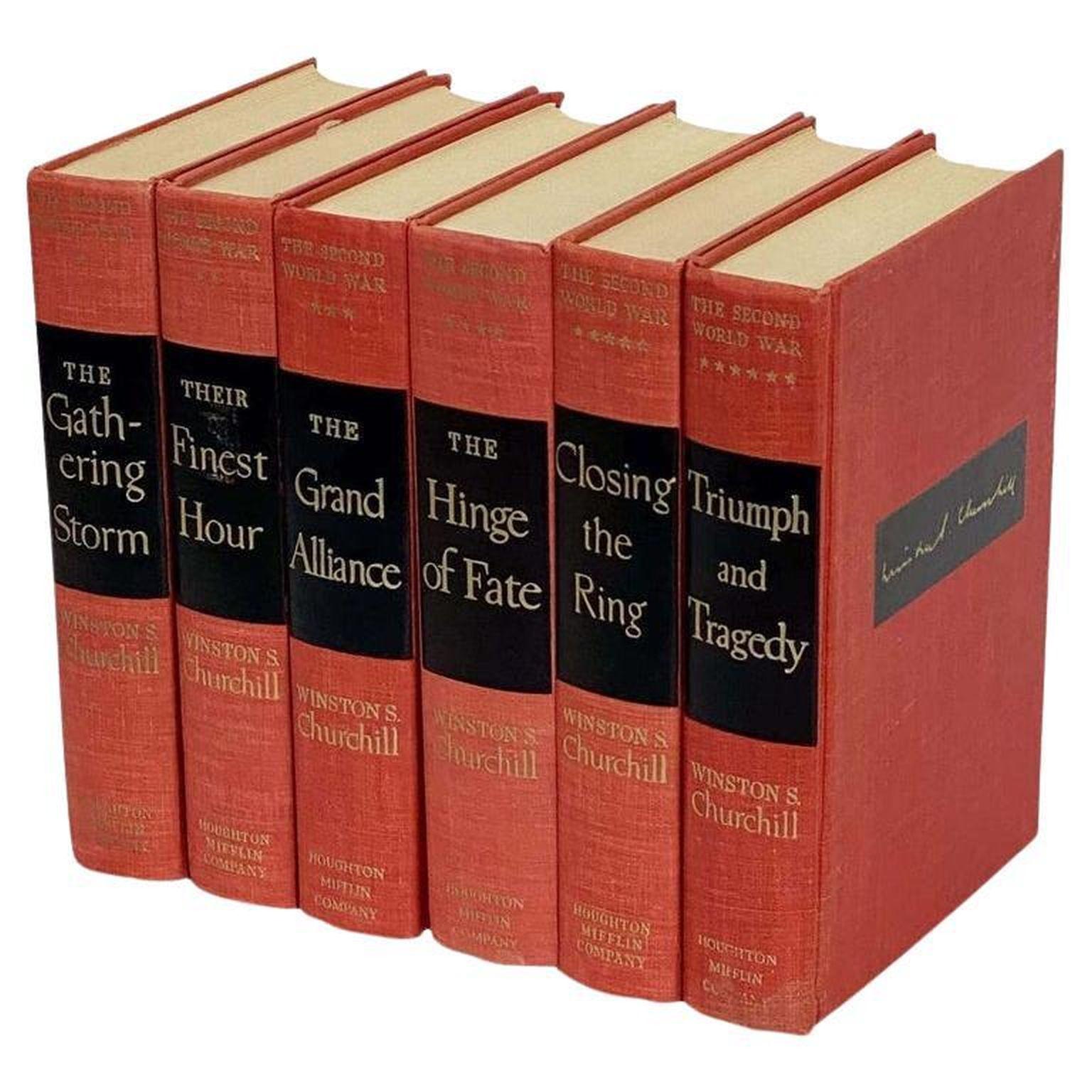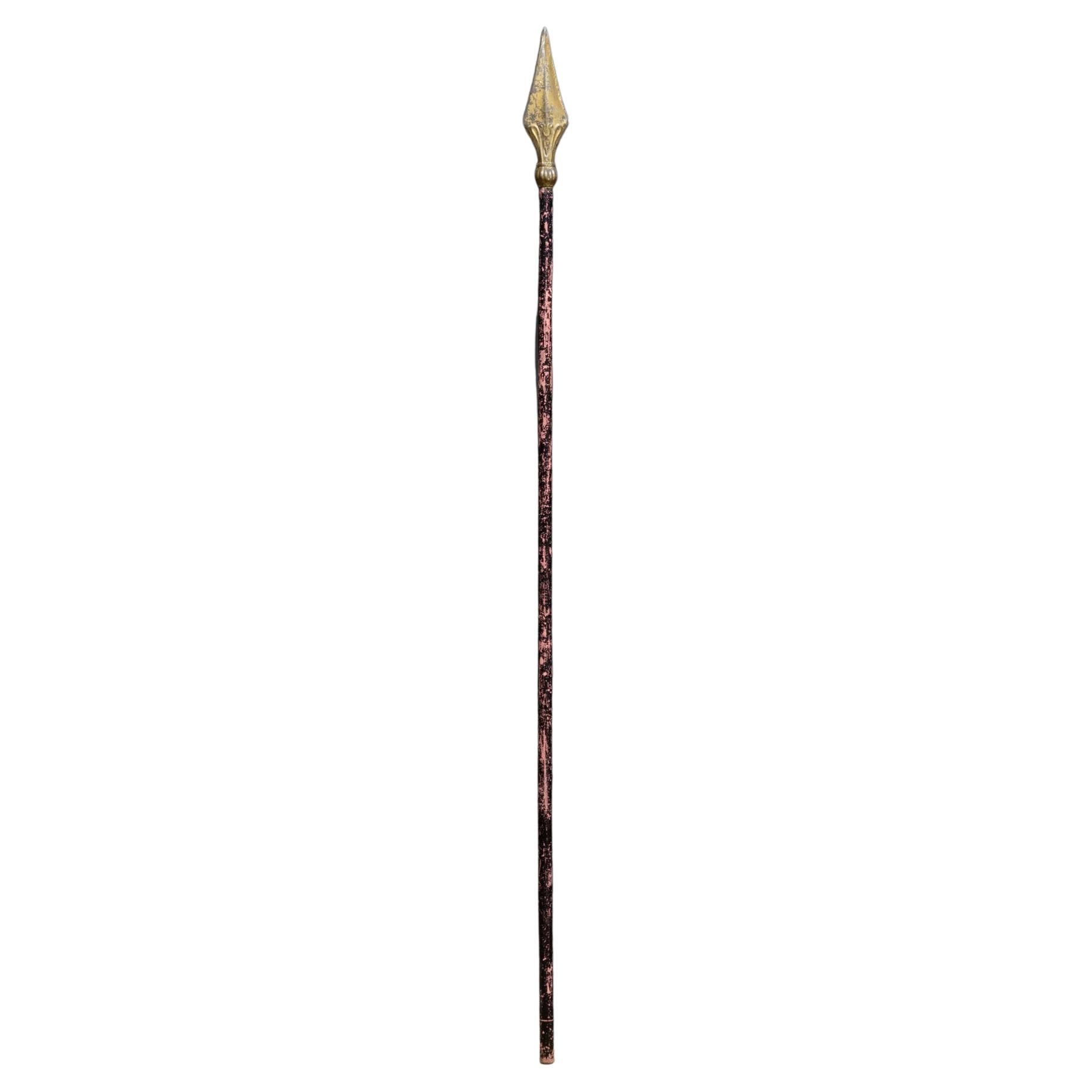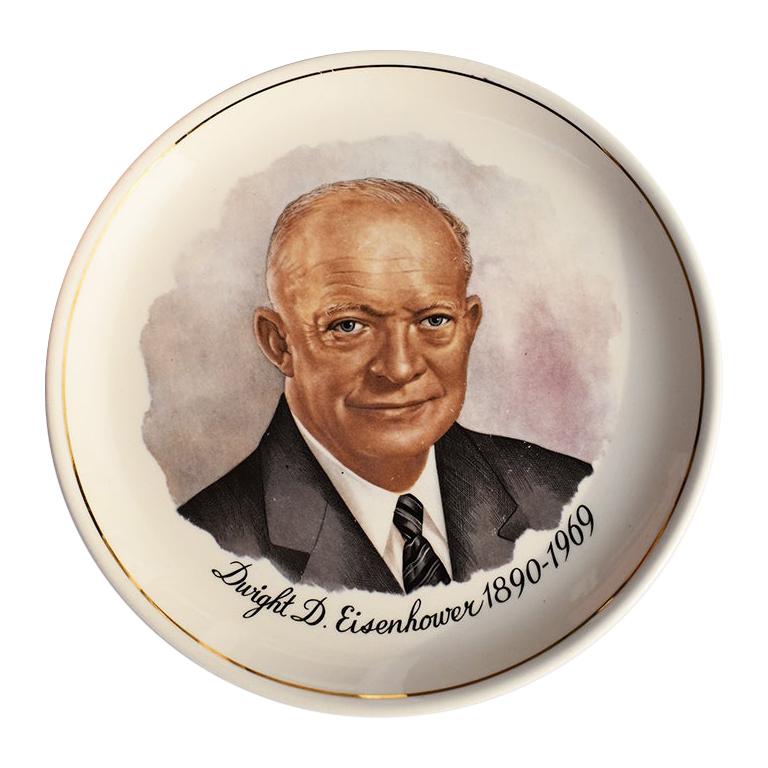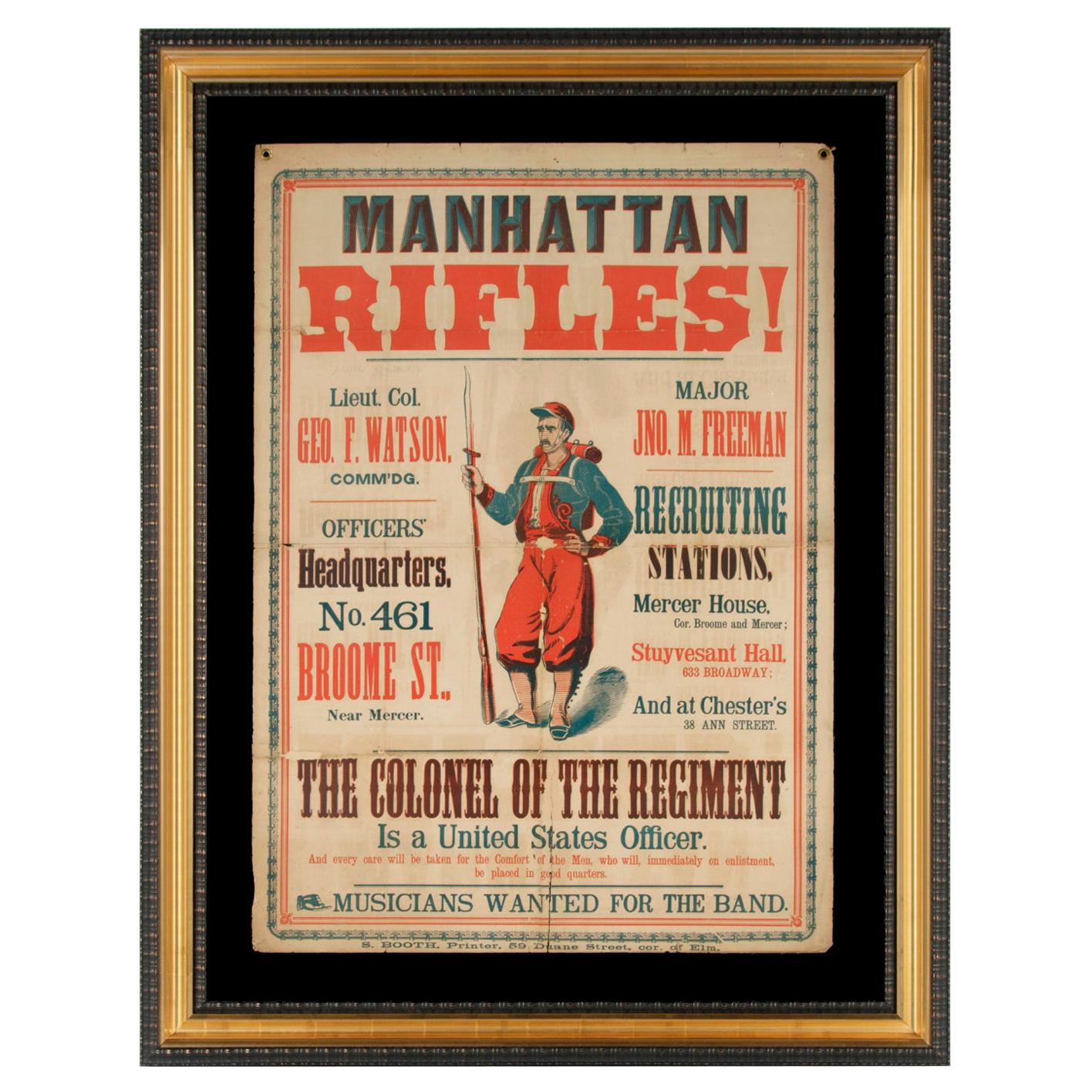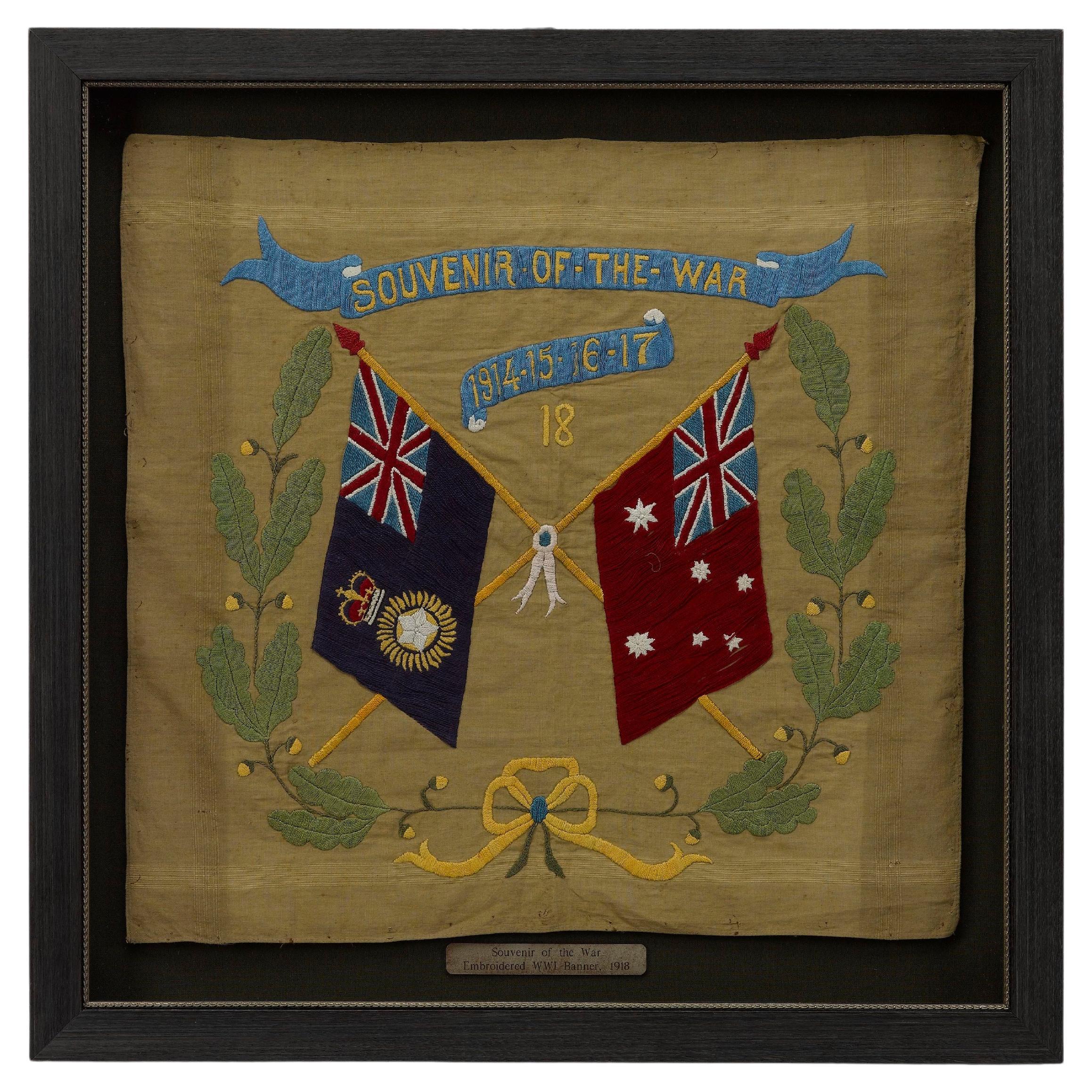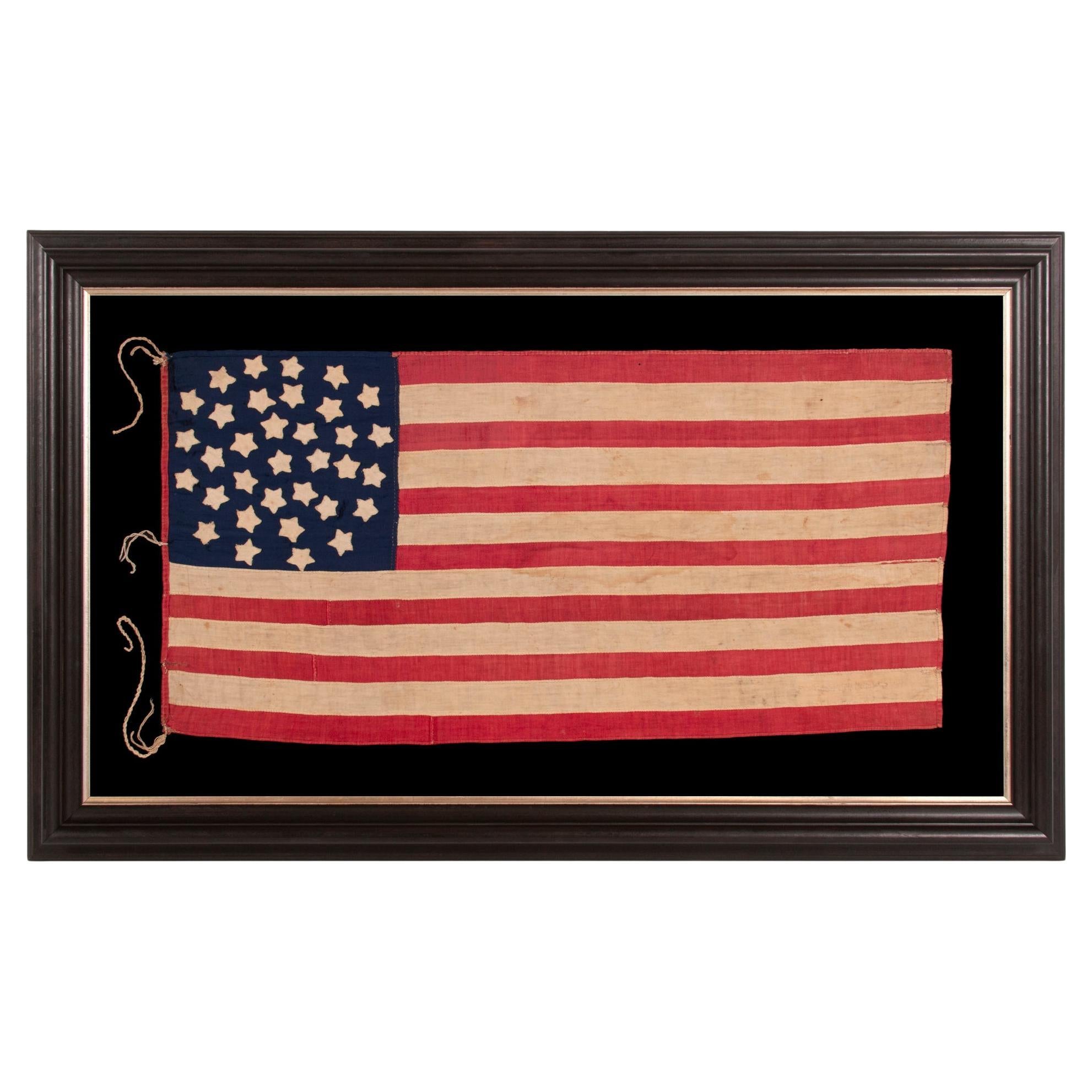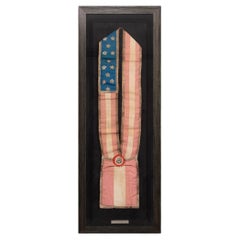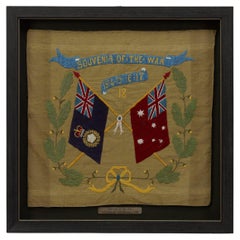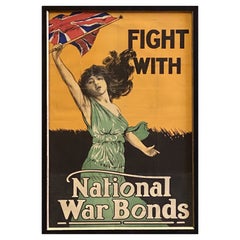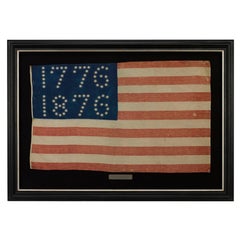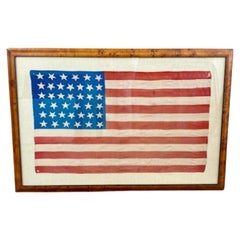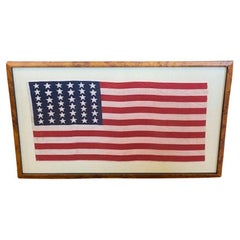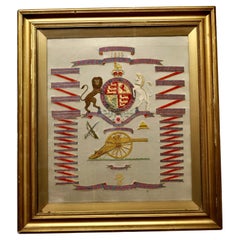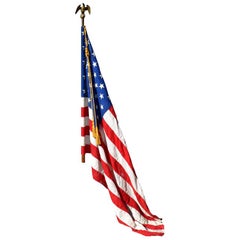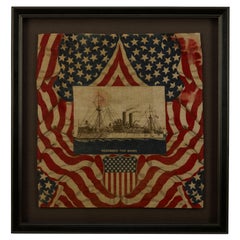
"Remember the Maine" Spanish-American War Commemorative Bandana, Late 19th Cent.
View Similar Items
Want more images or videos?
Request additional images or videos from the seller
1 of 8
"Remember the Maine" Spanish-American War Commemorative Bandana, Late 19th Cent.
$5,500List Price
About the Item
- Dimensions:Height: 31 in (78.74 cm)Width: 30 in (76.2 cm)Depth: 1.5 in (3.81 cm)
- Materials and Techniques:
- Place of Origin:
- Period:
- Date of Manufacture:1898
- Condition:Additions or alterations made to the original: Framed by Art Source International in Boulder, CO, in January of 2025. Wear consistent with age and use. Minor fading.
- Seller Location:Colorado Springs, CO
- Reference Number:Seller: F4621stDibs: LU909743517212
About the Seller
4.9
Platinum Seller
Premium sellers with a 4.7+ rating and 24-hour response times
Established in 2010
1stDibs seller since 2011
461 sales on 1stDibs
Authenticity Guarantee
In the unlikely event there’s an issue with an item’s authenticity, contact us within 1 year for a full refund. DetailsMoney-Back Guarantee
If your item is not as described, is damaged in transit, or does not arrive, contact us within 7 days for a full refund. Details24-Hour Cancellation
You have a 24-hour grace period in which to reconsider your purchase, with no questions asked.Vetted Professional Sellers
Our world-class sellers must adhere to strict standards for service and quality, maintaining the integrity of our listings.Price-Match Guarantee
If you find that a seller listed the same item for a lower price elsewhere, we’ll match it.Trusted Global Delivery
Our best-in-class carrier network provides specialized shipping options worldwide, including custom delivery.More From This Seller
View AllAntique 13-Star Patriotic Sash by Louis E. Stilz & Bros., Late 19th Century
Located in Colorado Springs, CO
Presented is an original patriotic sash from the late 19th century, featuring 13 stars against a bright blue field. This sash features appliqued silver stars on a blue canton, red an...
Category
Antique Late 19th Century American Historical Memorabilia
Materials
Cotton
Souvenir of the War 1914-15-16-17-18 Banner
Located in Colorado Springs, CO
Presented is a stunning textile banner from the first World War, dating to 1918. The square tan cotton cloth is embroidered with two crossed flags, the ...
Category
Vintage 1910s Australian Political and Patriotic Memorabilia
Materials
Cotton
Fight with National War Bonds Vintage British WWI Poster, Circa 1917-18
Located in Colorado Springs, CO
This is a vintage British WWI Poster, urging viewers to "Fight with National War Bonds." The poster features a woman in classical robes, hosting a British flag in an outstretched hand, with an impassioned and urgent look on her face. The poster was printed in England by Hill, Siffkin, & Co, circa 1917-1918.
During WWII, England relied heavily on the willingness of its citizens to lend money...
Category
Vintage 1910s Posters
Materials
Paper
$1,720 Sale Price
20% Off
Centennial Celebration "1776-1876" American Flag Banner
Located in Colorado Springs, CO
Presented is a rare Centennial patriotic flag banner, dating to 1876. The flag’s brilliant blue canton is spectacular, with 81 five-pointed, rayed stars, arranged to read “1776” and “1876.” The flag’s design is completed with thirteen alternating red and white stripes. The flag is a three-piece, treadle-sewn sewn construction, printed on a thin wool and cotton blend. Along the edge, there is a narrow, treadle-sewn sleeve made of cotton tape.
In the lead up to the nation’s Centennial in 1876, flag makers and individuals looked to the past for designs to produce as part of the country’s many celebrations. Popular interpretation of the stars and stripes undoubtedly reached its climax of variety and originality at the time of our Nation’s first Centennial. Since no design restrictions were placed on flagmaker’s imaginations and no strict distinctions were drawn between official and unofficial star counts, it is no surprise that, on the occasion of the Centennial, creativity in flag design was not the exception, but the rule.
The cantons from this period presented an array of geometric abstractions. Great star patterns, referred to as the “starry flower of Liberty” by Oliver Wendell Holmes, that were popular from 1818 and on, resurfaced in Centennial flags...
Category
Antique 1870s American Political and Patriotic Memorabilia
Materials
Wool, Cotton
46-Star Printed American Flag Waver, Celebrating Oklahoma Statehood
Located in Colorado Springs, CO
Presented is an American flag waver with 46 stars. The printed flag features a row pattern of stars against a dark blue canton, with thirteen red and white stripes completing the des...
Category
Antique Early 1900s American Political and Patriotic Memorabilia
Materials
Fabric
31-Star Printed American Flag, Celebrating California Statehood, Circa 1850
Located in Colorado Springs, CO
This is a rare 31-star medallion printed American flag, celebrating the addition of California to the Union. The flag is printed on silk and has a spectacular “Great Star” canton pat...
Category
Antique 1850s American Political and Patriotic Memorabilia
Materials
Silk
You May Also Like
19th Century American 39 Star Flag, circa 1889
Located in Nantucket, MA
19th Century American 39 Star Flag, circa 1889, a period printed silk parade flag with a wavy pattern of dancing stars. This was never an official flag of the United States but was m...
Category
Antique 1880s American Federal Political and Patriotic Memorabilia
Materials
Silk
19th Century 39 Star American Flag, circa 1889
Located in Nantucket, MA
19th Century 39 Star American Flag, circa 1889, a printed linen ensign with 39 stars arranged in a wavy star pattern, with stripes in a very unus...
Category
Antique 1880s American Federal Political and Patriotic Memorabilia
Materials
Linen
69th Battery Royal Field Artillery Framed Commemorative Embroidery
Located in Godshill, Isle of Wight
69th Battery Royal Field Artillery Framed Commemorative Embroidery
A stunning piece, in fine detail applied and embroidered tapestry, showing the counties and campaigns from 1855 ...
Category
Antique 19th Century Folk Art Political and Patriotic Memorabilia
Materials
Silk
Antique Federal Eagle American 50 Star Flag with Brass Eagle Pole, 19th Century
Located in Oklahoma City, OK
Monumental 50 star American Flag with antique Federal Eagle brass and wood pole. A patriotic piece suitable for any home. This set includes both ...
Category
Antique 19th Century American Federal Political and Patriotic Memorabilia
Materials
Brass, Bronze
$4,800 Sale Price
20% Off
"The Second World War, " by Winston Churchill
By Houghton Mifflin & Co.
Located in Austin, TX
The Second World War by Winston Churchill from Houghton-Mifflin Company, Boston.
A vintage edition of Winston Churchill's six-volume memoir, The Second World War, for which he was a...
Category
Mid-20th Century American Modern Books
Materials
Paper
19th c. Distressed French Flag Pole
Located in San Francisco, CA
ABOUT
A 19th century French distressed wooden flag pole tipped with toleware spear.
CREATOR Unknown. Made in France.
DATE OF MANUFACTURE c.1800s.
MATERIALS AND TECHNI...
Category
Antique 19th Century French Industrial Political and Patriotic Memorabilia
Materials
Tin
Recently Viewed
View AllMore Ways To Browse
Cuban Antiques
Antique Puerto Rico
Patriotic Shield
Signing Declaration Independence
William Camp Furniture
Revolutionary War Memorabilia
William Randolph Hearst
Rough Rider
Patriotic Handkerchief
Painted Red Distressed
Antique Moth
4th Of July
Profile Medallion
Antique Blue Canton
Framed American Flags
Antique Civil War Prints
Antique Brass Star
19th Century American Flag
